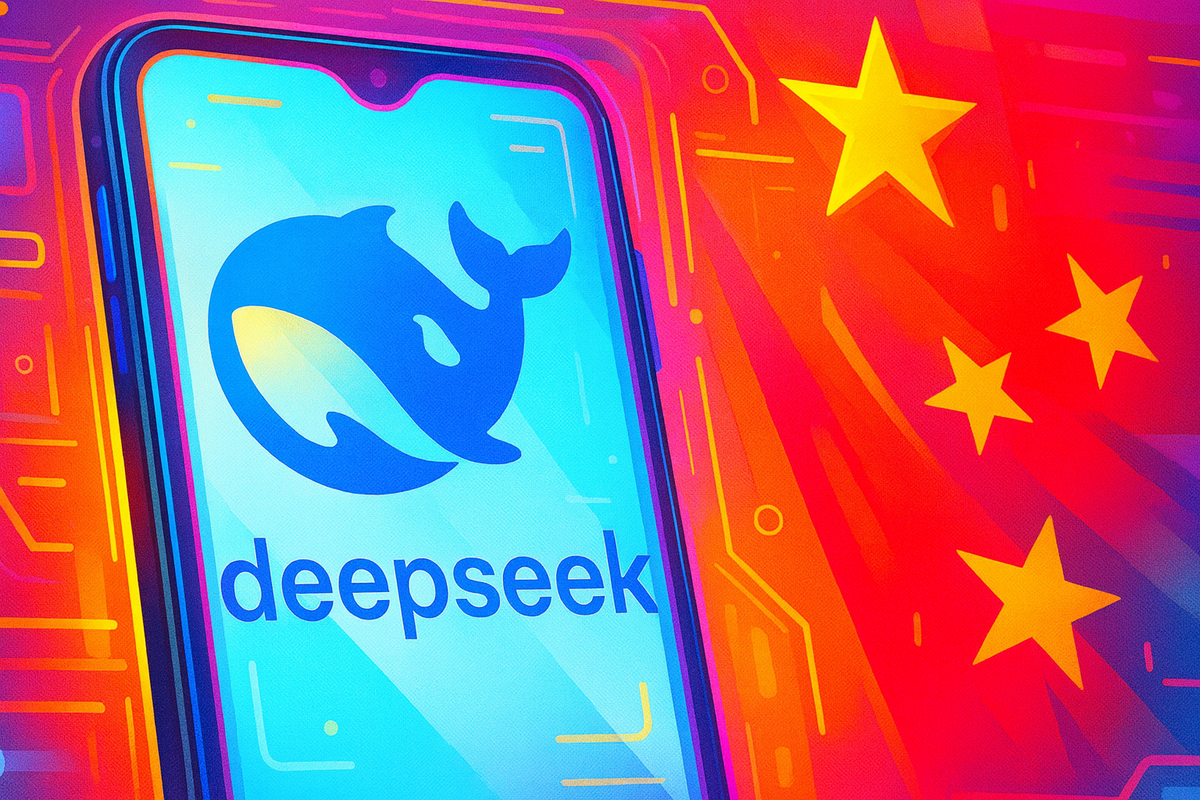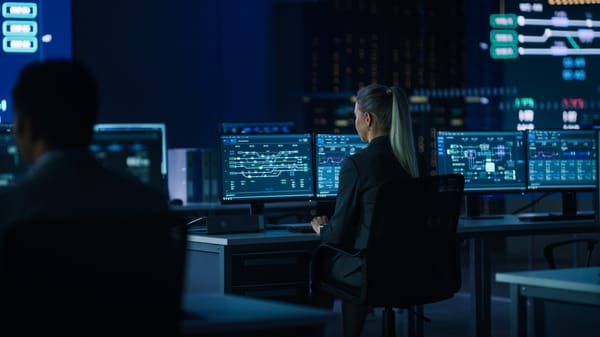🇨🇳 DeepSeek’s R1: A Geopolitical and Economic Wake-Up Call in the Global AI Race
DeepSeek’s R1 AI model rivals OpenAI at a fraction of the cost, showcasing China’s rapid innovation gains, raising national security concerns over open-source proliferation, and highlighting how export restrictions can drive efficiency breakthroughs that reshape the global AI race.

DeepSeek’s R1 rivals OpenAI’s most advanced models at a fraction of the cost, achieving frontier-level performance with far less compute and underscoring China’s rapid innovation gains.
Its open-source release poses significant national security risks, enabling hostile actors to adapt the model for cyber, disinformation, and other malicious operations at scale.
The breakthrough highlights how export restrictions can drive efficiency-focused innovation, lowering AI entry barriers globally while reshaping the U.S.–China technology race.
The announcement of DeepSeek R1, an artificial intelligence model developed by Chinese startup DeepSeek, has reverberated across global technology markets, shaking U.S. equities and sparking strategic debate in capitals worldwide. Rivaling OpenAI’s most advanced models at a fraction of the cost, the breakthrough highlights China’s accelerating ability to compete at the very frontier of AI development. This is more than a market disruption—it signals structural shifts in the global innovation race, reveals vulnerabilities in U.S. technology strategy, and raises urgent questions about national security, technoeconomic resilience, and the democratization of AI capability.
Technical Achievement and Efficiency Breakthrough
DeepSeek’s R1 delivers performance on par with, and in some cases exceeding, OpenAI’s latest GPT-4.1-class model while outperforming Meta’s LLaMA series. Crucially, it achieved this result faster, more cheaply, and with dramatically less compute power than its U.S. competitors. The company trained its R1 predecessor, V3, in roughly two months using around 50,000 Nvidia H800 GPUs. By contrast, reports indicate that OpenAI’s most advanced efforts require approximately 500,000 Nvidia H100 GPUs (Reuters).
The achievement rests on a combination of novel approaches. The Mixture of Experts (MoE) architecture directs each user query to a small subset of highly specialized “experts” within the model, which significantly reduces computational load and energy use. Advanced reinforcement learning techniques—going beyond simple reward-based training—helped speed up development while improving performance. While Microsoft has alleged that DeepSeek used “distillation” methods involving outputs from OpenAI’s models (Bloomberg), this would represent a leveraging of competitor innovation rather than a diminishment of DeepSeek’s own technical accomplishment. The core fact remains: DeepSeek has demonstrated that world-class AI can be built with “inferior” chips and far fewer of them.
Geopolitical Implications: China’s Accelerating Innovation Curve
The R1 launch confirms that China can close technology gaps in a matter of months, not years, recalling Huawei’s Mate 60 Pro semiconductor breakthrough in 2023. It intensifies the U.S.–China AI rivalry and forces a reassessment of how technological thresholds are identified and anticipated. The speed of this progress highlights a gap in “technoeconomic intelligence” within the United States, underscoring the need for the intelligence community to develop better early-warning capabilities for disruptive innovations. The public and highly visible nature of R1’s debut also serves as strategic signaling, projecting that China can operate at the AI frontier even under advanced U.S. semiconductor export controls.
National Security Risks: Open-Source as a Force Multiplier
Unlike most U.S. frontier AI models, R1’s architecture and weights are openly available, making it possible for anyone to study, adapt, and deploy the system. This open-source posture, while beneficial to global research collaboration, introduces serious national security risks. Hostile state and non-state actors—including China, Iran, and North Korea—can adapt R1 to run cyber operations, conduct disinformation campaigns, and automate malicious activities at scale and minimal cost.
There is already evidence of Chinese operators using Google’s Gemini AI to identify vulnerabilities in networks and systems; the release of R1 could dramatically expand such capabilities. Open access accelerates proliferation, enabling actors worldwide to create specialized derivatives for targeted operations. These risks make it imperative to strengthen defences against AI-enabled cyber threats and to secure national security-relevant AI systems from adversarial use.
Economic Dynamics: Scarcity-Driven Innovation
DeepSeek’s success demonstrates the power of constraint-driven innovation. U.S. export controls on high-performance GPUs have forced Chinese engineers to create more efficient algorithms, echoing Cold War-era examples where Soviet computing limitations drove breakthroughs in software optimization (RAND). R1’s development shows that scarcity can foster ingenuity, particularly in refining architectures to function effectively with reduced compute. This efficiency advantage could inspire U.S. companies to adopt similar approaches for cost-sensitive or edge-based AI applications.
Initial investor concerns that such innovations might reduce demand for high-end GPUs like Nvidia’s H100 may be misplaced. Historically, increases in performance and decreases in cost have tended to drive up overall demand for compute, as more organisations find new uses for the technology (Wired).
Democratization of AI Innovation
The release of R1 marks a major step in lowering the capital threshold for developing world-class AI systems. Smaller firms, startups, and academic institutions can now access capabilities once limited to billion-dollar players. This could spark an explosion of AI applications, not just in major technology hubs but globally. Efficient models also open the door for more computing to occur “on the edge,” running locally on consumer devices or industrial hardware, reducing reliance on centralised cloud platforms and reshaping power dynamics in the AI sector.
This democratization brings opportunity and risk in equal measure. It enables innovation across more sectors and geographies, but also widens access to tools that can be misused for disinformation, fraud, or cyber operations.
U.S. Strategic and Policy Responses
The United States is beginning to adjust to the realities of accelerated, distributed AI innovation. One high-profile move is President Trump’s directive to establish a U.S. Sovereign Wealth Fund focused on deep-tech investment (White House Press Release). Drawing lessons from In-Q-Tel’s venture capital model for national security technologies, such a fund could provide the patient capital required to scale high-risk, high-impact projects. If managed effectively, it could return profits while securing the country’s long-term technological edge.
The Department of Defense faces its own adaptation challenge, needing to integrate industrial capacity and sustainment planning into concepts of lethality and deterrence. The war in Ukraine has shown that manufacturing advantage is as critical as weapons performance in protracted conflicts (CSIS). Likewise, the intelligence community must modernise its operating model, moving beyond traditional sequential intelligence collection towards AI-enabled knowledge and decision advantage, reducing the lag between detection and action.
Strategic Outlook
DeepSeek’s R1 is part of a broader trend of converging technological capabilities between China and the United States. It illustrates how export controls can slow, but not stop, an adversary’s progress—and may in some cases accelerate innovation in efficiency. It highlights the security implications of open-source AI proliferation, the economic impact of democratized development, and the shifting geography of technological power.
For the United States and its allies, the challenge is to integrate technology foresight, industrial strategy, and national security policy into a cohesive framework that can sustain an advantage in an era of rapid, distributed innovation. The goal is not only to innovate faster, but to anticipate and adapt to breakthroughs—especially those emerging from unexpected sources.
DeepSeek’s R1 is more than a technical accomplishment; it is a strategic inflection point in the global AI race. It exposes the limitations of relying solely on hardware controls, reinforces the importance of agile intelligence and industrial policy, and demonstrates how scarcity can be leveraged into competitive advantage. The task ahead for the United States is twofold: to harness the open innovation potential of such breakthroughs while safeguarding against their misuse, and to rebuild the capacity to innovate with speed, scale, and efficiency. In the AI era, national capability is defined not only by resources, but by ingenuity, adaptability, and strategic intent.




